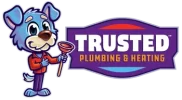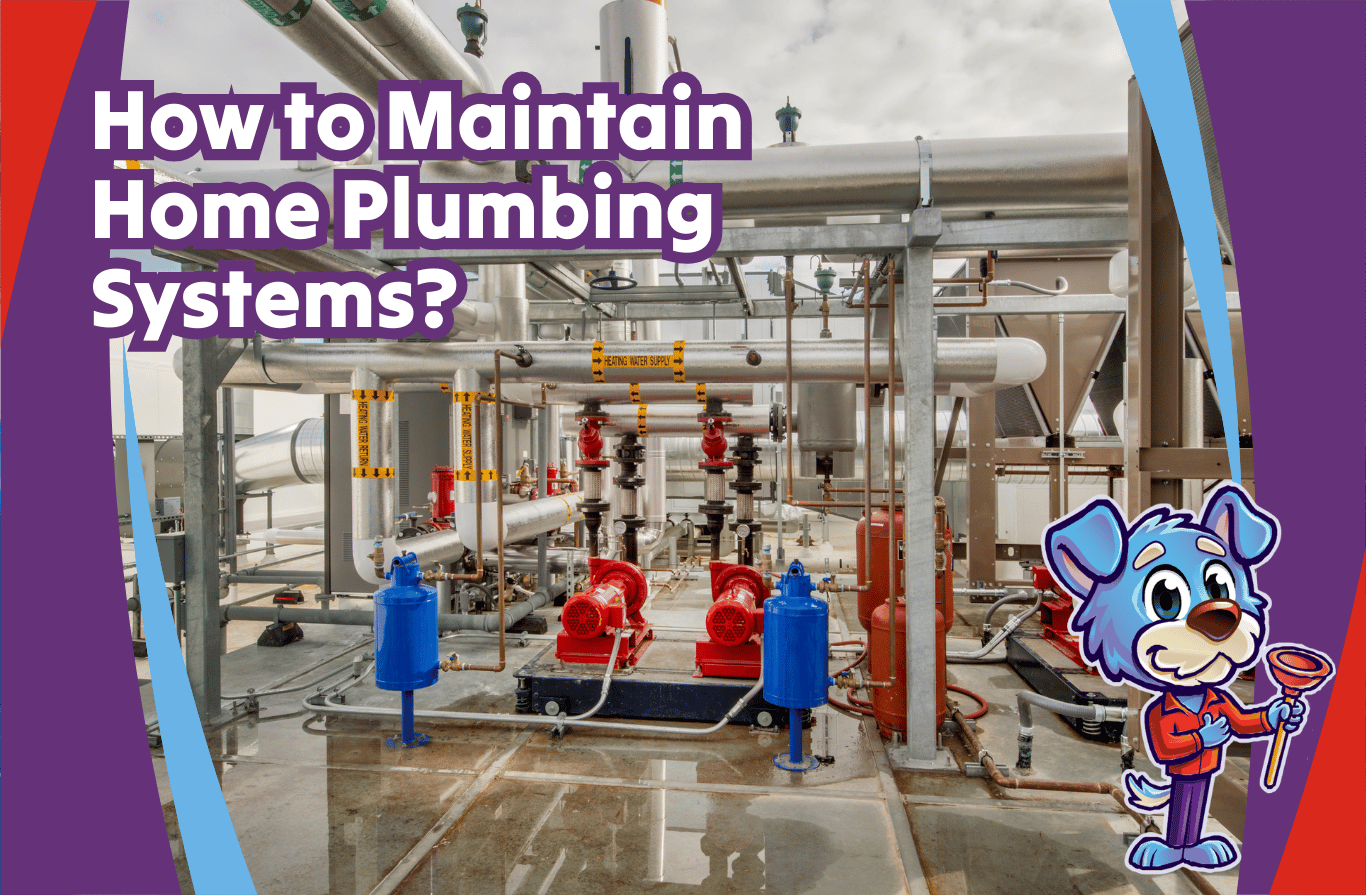How to Maintain Home Plumbing Systems?
Your home’s plumbing system is a complex network that quietly supports your daily routine—providing clean water, enabling sanitation, and protecting your home from water damage. When you know how to maintain home plumbing systems, you not only prevent costly repairs but also conserve water and extend the lifespan of your fixtures and appliances.
Regular plumbing maintenance ensures smooth operation, minimizes utility bills, and catches issues early before they become emergencies. In this guide from Trusted Plumbing & Heating, you’ll learn how to maintain home plumbing systems through daily habits, seasonal checklists, component-specific care, and signs that it’s time to call a professional.
Understanding Your Home Plumbing System
Your home’s plumbing includes several critical components:
- Supply Lines: These bring fresh water into your home from your main water line.
- Drain-Waste-Vent (DWV) System: This handles wastewater and keeps harmful sewer gases out.
- Fixtures: Faucets, toilets, showers, and appliances like dishwashers and washing machines.
- Water Heater: Supplies hot water for hygiene and cleaning needs.
Knowing your system layout is essential. Locate the main shut-off valve and understand where plumbing pipes run, especially in basements, crawl spaces, and behind walls. Professional inspections from Trusted Plumbing & Heating can help identify hidden issues and assess the overall health of your system. Learning how to maintain home plumbing systems effectively starts with understanding its components.
Daily Plumbing Maintenance Tips
1. Be Mindful of What Goes Down the Drain
Prevent clogs by avoiding the disposal of oils, fats, coffee grounds, and starchy or fibrous foods in kitchen sinks. In bathrooms, reduce the use of bath oils and install screens to trap hair. Keep garbage disposals clear by avoiding inappropriate waste.
2. Use Strainers and Screens
Install strainers in sinks, tubs, and floor drains. They catch debris before it causes blockages. Empty and rinse them regularly to maintain good flow. This preventive maintenance step can protect the overall plumbing system.
3. Avoid Flushing Trash
Only human waste and toilet paper should go down the toilet. Items like wipes (even “flushable” ones), sanitary products, cotton pads, and paper towels do not disintegrate properly and can clog pipes.
Weekly Plumbing Maintenance Habits
4. Check for Visible Leaks
Inspect under sinks, around appliances, and near toilets for water stains, puddles, or corrosion. These early signs often point to deteriorating seals or fittings.
5. Test Drainage Speed
A slow-draining sink or tub may indicate a clog forming. Use a plunger or natural cleaners early to avoid complete blockages. Check multiple drains for consistent flow.
6. Inspect Faucet Handles and Valves
Ensure handles and valves don’t leak when turned on or off. Minor drips waste water and often point to worn washers or O-rings. This small task plays a big role in regular inspections.
7. Clean Appliance Filters and Traps
Dishwashers and washing machines have filters that collect lint, food particles, and debris. Clean these filters weekly to maintain performance and prevent buildup that affects your plumbing system.
Monthly and Seasonal Plumbing Maintenance Checklist
Fall Maintenance
- Disconnect garden hoses and store them.
- Drain exterior water lines and winterize sprinkler systems.
- Insulate exposed outdoor faucets and vulnerable pipes in garages or crawlspaces.
- Conduct a full inspection checklist before winter.
Winter Maintenance
- Insulate both hot and cold plumbing pipes near exterior walls or unheated zones.
- Use weather stripping or foam to seal cabinet drafts.
- Let water trickle from faucets during deep freezes to prevent pipe bursts.
- Keep cabinet doors open to allow warm air to circulate around under-sink pipes.
Spring Maintenance
- Inspect pipes for cracks or damage caused by freezing.
- Flush drains not used during winter to refill traps.
- Check gutter alignment and downspouts for proper water drainage away from your foundation.
- Test your sump pump by pouring water into the pit. Ensure it activates correctly and discharges water properly.
Summer Maintenance
- Have your septic tank inspected and pumped if needed.
- Clean sprinkler heads and check for underground leaks.
- Inspect and replace cracked garden hoses.
- Monitor irrigation systems to prevent overwatering and avoid stress on plumbing pipes.
Major Components Requiring Regular Attention
8. Water Heater Maintenance
Sediment buildup reduces efficiency. Drain and flush your tank annually. Set the thermostat to 120°F to prevent scalding and reduce energy costs. Inspect the pressure relief valve to ensure safe operation. These routine checks are part of smart preventive maintenance.
9. Sump Pump and Pit
Sump pumps prevent basement flooding. Clean debris from the pit and test pump function monthly. Check discharge lines for obstructions that could prevent water from exiting your property. Keeping this part of your plumbing system working prevents major water damage.
10. Washing Machine and Dishwasher
Old rubber hoses are prone to bulging or leaking. Upgrade to braided stainless steel hoses for durability. Inspect connections and replace hoses every 3–5 years. A leak here can compromise multiple parts of your plumbing system.
11. Water Pressure Checks
Use a gauge on an outdoor faucet. Ideal pressure ranges from 40 to 50 psi. High water pressure can strain fittings and cause leaks. If pressure exceeds 60 psi, install a regulator. Balanced water pressure keeps your plumbing pipes safe.
12. Toilet Leak Checks
Place a few drops of food coloring in the tank. If the color seeps into the bowl without flushing, the flapper is leaking. Replace flappers or fill valves as needed. These checks reduce waste and avoid unseen water damage. Another smart step in how to maintain home plumbing systems.
13. Exposed Pipes and Valves
Visually inspect pipes in basements or utility rooms. Rust, condensation, or warping indicate potential failures. Do not hang items on exposed pipes, as even light loads can weaken joints and fittings.
Drain Care and Clog Prevention
14. Natural Drain Cleaning Methods
Monthly treatment with baking soda followed by vinegar and hot water can help dissolve light grease or soap scum. Avoid overuse to prevent disrupting beneficial bacteria in septic systems. This natural method helps maintain healthy drains.
15. Avoid Chemical Drain Cleaners
Most chemical cleaners damage plumbing pipes over time and often push blockages further down. Use a plunger or manual snake instead. Persistent blockages require professional drain cleaning services from Trusted Plumbing & Heating.
16. Garbage Disposal Best Practices
Limit disposal use to small food scraps. Never insert bones, corn husks, coffee grounds, or starchy items. Always run cold water before, during, and after operation to keep garbage disposals functioning properly.
Emergency Preparedness for Plumbing Issues
17. Know Where and How to Shut Off Water
Label shut-off valves for toilets, sinks, and your main line. In an emergency, quickly turning off the water can prevent major damage. This knowledge is a critical part of any homeowner’s plumbing maintenance plan. It’s one of the core practices in how to maintain home plumbing systems efficiently.
18. What to Do When Pipes Freeze or Burst
If pipes freeze, shut off the main valve immediately. Open the faucet and use a hair dryer to slowly thaw exposed pipe sections. Never use open flames. If a pipe bursts, contact Trusted Plumbing & Heating for professional pipe replacement.
When to Call the Professionals at Trusted Plumbing & Heating
Even with the best maintenance habits, certain situations require licensed expertise:
- Repeated drain backups or clogs
- Signs of water damage or musty odors
- Low water pressure throughout the home
- No hot water or discolored water
- Persistent leaks or aging pipes
Our technicians perform comprehensive inspections, locate hard-to-find leaks, and provide tailored solutions that keep your system running smoothly. We provide inspection checklists tailored to your property and explain how to maintain home plumbing systems long-term.
Trustworthy Local Plumbing
Trusted Plumbing & Heating is your go-to expert for plumbing care in King and Pierce Counties. We’re a family-operated business known for our integrity, reliability, and commitment to your comfort and safety.
Fully Qualified and Transparent
We’re fully licensed (License #TRUSTPH781NC), bonded, and insured. All our technicians are trained, certified, and stay current on plumbing codes and technology. We handle everything from water heaters to complex drain issues, helping you understand how to maintain home plumbing systems from every angle.
Same-Day Service and Transparent Pricing
Plumbing problems don’t wait—and neither do we. Call us for a same-day estimate and fast, professional service. We provide upfront quotes with no hidden fees. Whether it’s rooter service, sump pump inspections, or drain clearing—we’ve got you covered.
Why Choose Trusted Plumbing & Heating?
- Customer-Focused: Clear communication and honest guidance
- Expert Technicians: Skilled in everything from basic repairs to complex systems
- Reliable Dispatch: One of the largest local dispatch centers for fast response
- Safety First: Fully bonded and insured to give you peace of mind
Call us today at (425) 406-4870 to schedule service or request a quote. Let us help you keep your plumbing system in top shape—so you never have to worry about surprise leaks or costly emergencies again. We’re here to show you exactly how to maintain home plumbing systems effectively and reliably.



